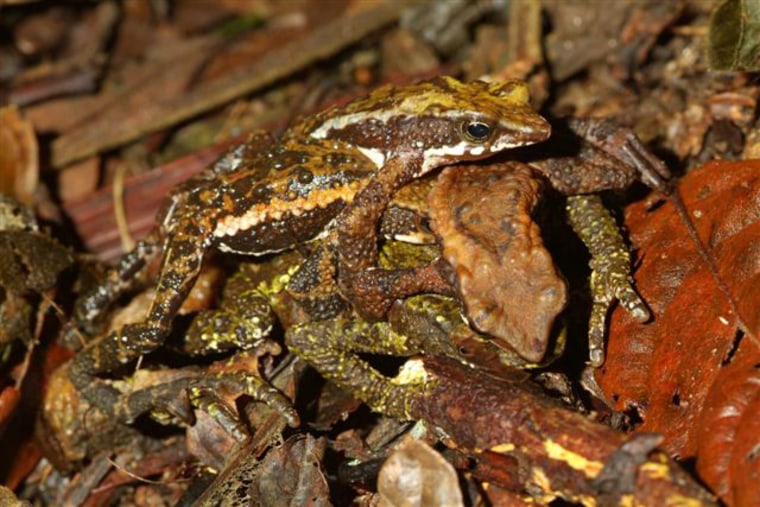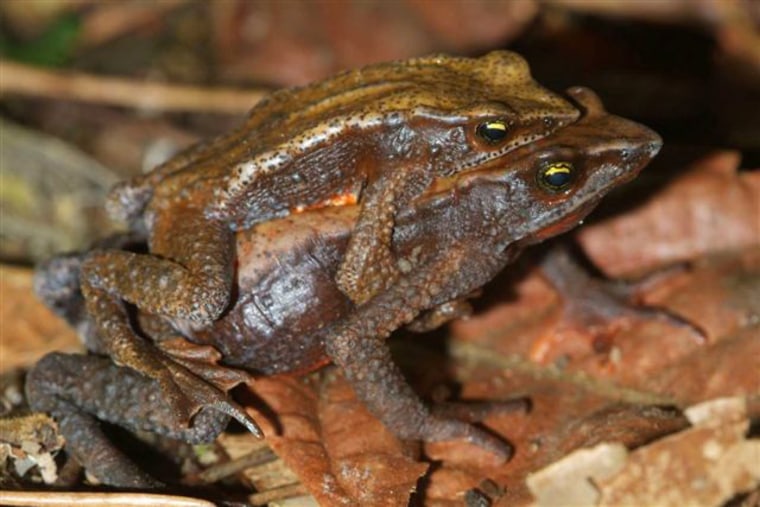Two frog species feared extinct have been rediscovered in Colombia, a boost for scientists battling to save rare amphibians threatened by a deadly disease.
“These finds show there is still hope ... a lot of these species were pretty much written off,” Claude Gascon, a senior vice president at Conservation International in Washington, told Reuters on Tuesday.
Scientists have found the Santa Marta Harlequin frog and the San Lorenzo Harlequin frog, rated critically endangered after no sightings in 14 years, in a reserve in the Sierra Nevada de Santa Marta massif on Colombia’s Caribbean coast.
A fungal disease that smothers amphibians’ skin is decimating dozens of species of brightly colored frogs in Central and South America, adding to pressures such as pollution, climate change, deforestation and expanding cities.
The rediscovery of another species — a painted frog — in Boyaca, Colombia, was announced last month.
Fighting the fungus
Some scientists say amphibians are on the front line of what may become the worst extinction crisis since the dinosaurs vanished 65 million years ago.
Gascon said it was not clear if the frogs had resisted the skin fungus — chytridiomycosis — or were in a region as yet unaffected. The disease had killed frogs 25 miles (40 kilometers) from the site of the two latest finds.
Alarmed by extinctions, amphibian experts are seeking more than $400 million to fund captive breeding in zoos and aquariums — already aiding about 35 species. However, frogs cannot be reintroduced to the wild because of the disease.
“We can treat the disease in captivity, but any reintroduction program is doomed to fail,” said Joe Mendelson, a curator at Zoo Atlanta and the acting head of the amphibian specialist group at the World Conservation Union.
“Capture programs are usually all about supporting populations in the wild. Because of the disease, this can’t work,” he said. He said captive breeding could be expanded to help “hundreds, if not thousands, of species.”
Vulnerable to environmental factors
Amphibians — toads, frogs, newts and some wormlike creatures — are highly vulnerable to disease, pollution or changes in temperature because they live on both land and in water and have a porous skin that absorbs oxygen.

Some vanished species might have had skills valuable to humans. The Australian Northern Gastric Brooding frog, considered extinct and not sighted since 1985, could shut off its digestive juices to incubate its young in its stomach.
“You can imagine the kind of knowledge in terms of helping fight ulcers that the gastric brooding frog might have held,” Gascon said.
Gascon said the rediscovery of the frogs showed that preservation of small habitats — such as the El Dorado reserve where the two frogs were found in Colombia — could be a key to saving many threatened species.
A global group of conservationists, the Alliance for Zero Extinction, said last year that preserving 595 sites around the world could help save 794 endangered species.
